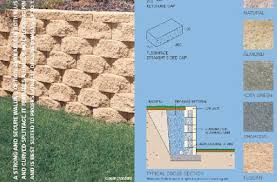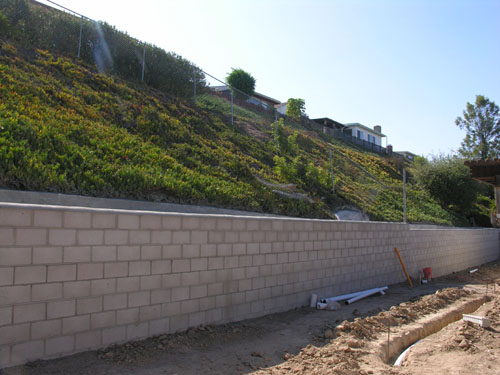Retaining walls are essential for a lot of reasons, the most evident of which would be to serve as a physical barrier to prevent entry to a room. It’s important that you select one which meets your function and fits your budget. There are a number of options when it comes to picking keeping walls. You can use concrete, rock, wood or perhaps concrete-poured insulation.
Constructing Retaining Walls
Retaining walls are traditionally utilized to split different areas in a garden or to lend solitude to your home. In some cases, they are built to provide protection from flooding or the adverse effects of ultra violet radiation. The principal reason behind keeping walls would be to offer a barrier to avoid soil erosion and to retain soil in place. You don’t need to stop retaining wall so as to make a physical obstacle. Retaining walls come in the kind of posts and fences.
Constructing Retaining Walls
Retaining walls can be made of concrete, rock, wood or some other substance. They might also be constructed from steel or another durable material. Many people prefer the sound-absorbing attributes of rock, while others prefer to see their keeping walls coated with insulating material. Retaining wall materials come in many different shapes, colours and dimensions. You should buy a retaining wall that matches your function well. If you’re setting up a retaining wall to make a privacy wall, as an example, then opt for a rectangular or square shape to permit proper viewing.
The type of material you will use will also depend on the climate in which you live. Stones will be better suited to climates with cool summers and hot winters. Wood is ideal for colder climates. Concrete is acceptable for all weather conditions. Retaining walls constructed from rock, concrete or wood is more difficult to keep than those constructed out of other substances. That is because you want to regularly apply sealant or repair any cracked or broken concrete.
You might wish to have several retainers in varying sizes to give your retaining walls for maximum protection. As they say, the larger the wall, the better. There are choices available to expand a retaining wall as per your needs. If you want to create a retaining wall which gives maximum protection, you could get several big walls built parallel.
The position of the retaining wall will also have an impact on how well it works. In case that you would like to retain water away from your foundation, you’ll have to place the wall at a higher degree. The higher you place it, the not as likely water will put in your basement. On the other hand, if you want to keep excess rainfall away, you can build your retaining wall at a lower degree.
Materials to your retaining walls need not be costly. It is possible to save a great deal of money by choosing used and cheap materials. You also need to bear in mind that what seems good to you may not seem good to others, and what looks good to others might not look great at all to your own basement.
Selecting the correct materials for your retaining walls is important. As stated earlier, you need to get a strong base to set the walls . But in regards to stuff, price shouldn’t be your main concern. Your primary concern must be with durability, strength, and if the material can hold up to harsh weather conditions. As stated earlier, you may use the cheapest materials possible but keep in mind they may not last very long and could give way very quickly.
How to build a retaining wall starts with deciding where your base is situated. If your base has no base then you’ll have to pour a concrete footing. This is a more expensive process but it’s certainly the toughest. When you have decided the site of your base, you are ready to begin constructing the retaining wall.
Most homeowners construct their retaining wall . This means that the conclusion of the wall is constructed at a forty-five level angle. However, if your home has an angled slope, or should you would like to prevent a straight and leveled wall, then you may build your wall at any angle. Once you have decided where you would like your retaining wall to proceed, it is time to dig. A shovel should be at the ready.
As the seasons pass and temperatures hot, your stone or concrete retaining walls will most likely begin to crack and crack. Don’t let this discourage you. Whenever you have a repairman working for you, they can spend several hours trying to fix the issue. Most repairs can be completed in one moment.
